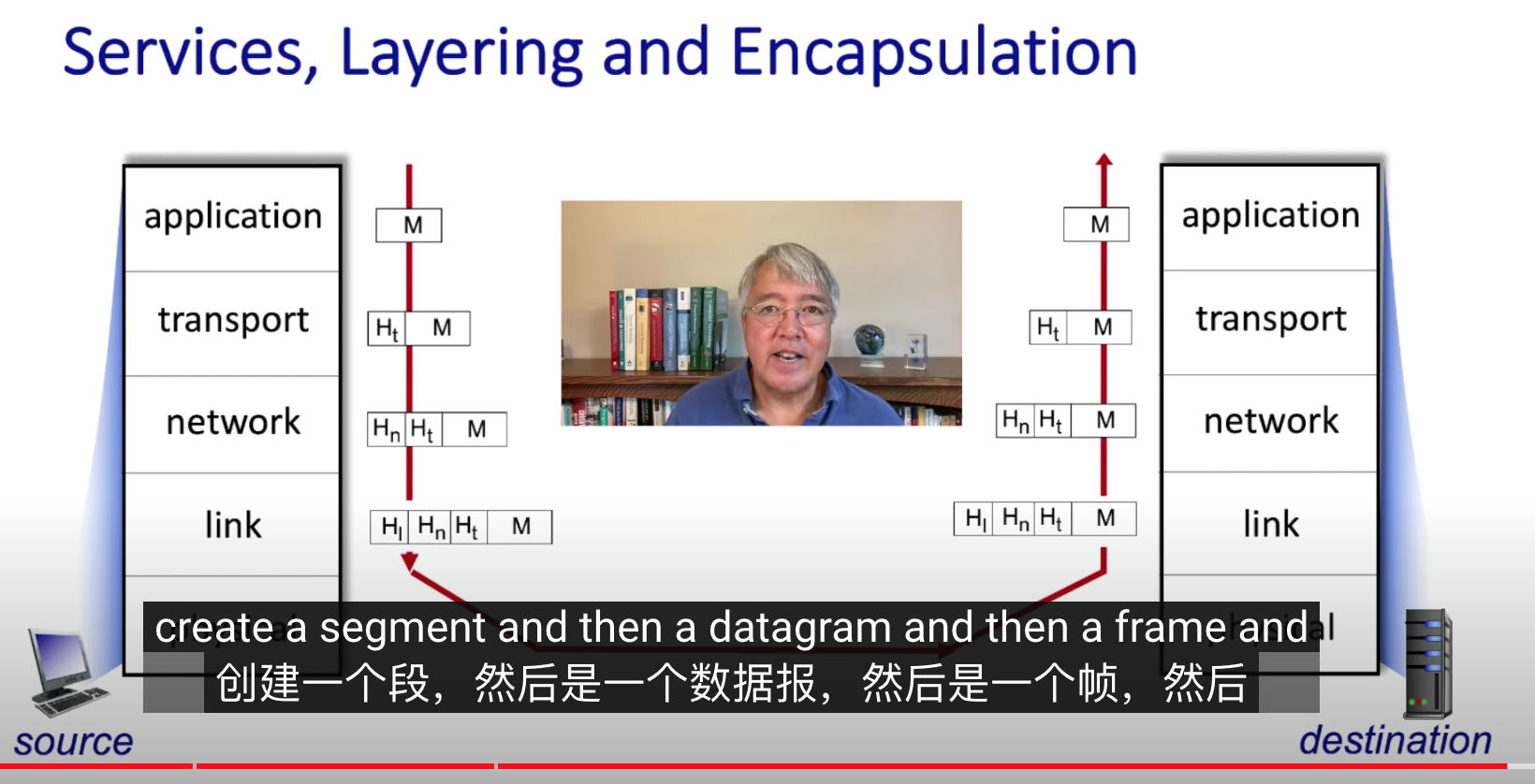Chapter1 Introduction
1.1 what is Internet? What is a protocal
Internet: Network of Networks
protocals define the format, order of messages sent and received among network entities, and actions taken on message transmission, receipt.
1.2 Network edge
approximate speeds
| access network | speeds |
|---|---|
| Ethenet | Wired. Up to 100's Gbps per link |
| 802.11 WiFi | Wireless. 10’s to 100’s of Mbps per device. |
| Cable access Network | Wired. Up to 10’s to 100’s of Mbps downstream per user. |
| Digital subscriber Line | Wired. Up to 10’s of Mbps downstream per user. |
| 4G cellular | Wireless. Up to 10’s Mbps per device. |
1.3 The network core: packet/circuit switching, internet structure
1.4 performance: delay, loss, throughput
delay: processing delay, queueing delay, transmission delay, propagation delay
1.5 layering, encapsulation, sevice models
layered Internet protocal stack

- application: supporting network applications
- http, IMAP, SMTP, DNS
- transport: process-process data transfer
- TCP, UDP
- network: routing of datagrams from source to destination
- IP, Routing protocals
- link: data transfer between neighboring network elements
- Ethenet, 802.11(WiFi), PPP
- physical: bits "on the wire"
| layer | ||
|---|---|---|
| application | message | M |
| transport | segment | HtM |
| network | datagram | HnHtM |
| link | frame | HlHnHtM |
| pysical | bit |